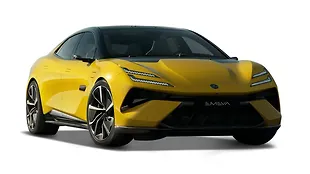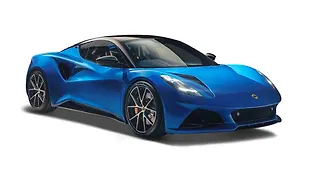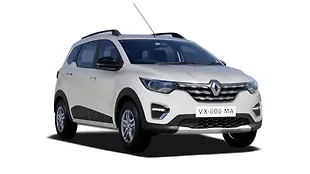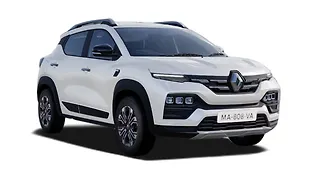Introduction
Are they two peas in a pod? Based on the Renault-Nissan Alliance’s CMF-A+ platform, they share the same engine and gearbox and roll off the same production facility. This pair has kicked up a storm in the sub-four metre SUV segment since their arrival, mainly due to the overall package as well as undercutting pricing. But how similar or different are the Magnite and Kiger from each other?
Exterior Design

A casual bystander with no idea about their shared lineage would be hard-pressed to come to terms that both are the same under the skin. It’s surprising how the suspension mounting, pillar placements, and the way all the hinges/bumpers/axles are connected are in the same place, yet the other parts and panels designed around them are made in a way to lend individual personality. Looking at the Magnite you’d notice its sharp design approach with sleek angry-looking headlamps and edgier creases with a much cleaner approach at the back. The Kiger looks more bulbous and more rounded in comparison, which also makes it appear bigger than it actually is.

Kiger’s design has a flamboyant sheet metal work which might be likeable from certain angles and not so much from others. On the Magnite, we’d have loved to see the Nissan’s V-Motion grille instead of Datsun’s mesh design to complement its sharp-looking vertical LED-clad lower bumper. Overall, if you look at finer details, there are many distinctive elements on their exteriors, for instance, the door handles, roof rails, side skirting, cladding design, bonnet creases, and how the nose dips more in the Magnite and is more upright in the Kiger. More importantly, the window line on the side is different on both.
Matching on the inside?

Just like the exterior, the cabins of both the Magnite and Kiger are poles apart from each other. Similar elements include the panel with buttons for hazard lights and door lock, three dials for air-con control, and a smartphone pad jutting out in the middle which also houses the start/stop button. These are the only similarities between the two. The dashboard layout, centre console, and instrument cluster on both these sub-four metre SUVs are unique.

In the Kiger, you get a huge centre console with sliding storage that resembles premium cars. Even the handbrake position is different from Magnite’s to accommodate it in the protruding console. This console also has a circular dial for drive modes. Along with it, there’s an ambient lighting button, which seems unnecessary. With the absence of a centre console in the Magnite, one gets slightly more moving space for their elbow or knee. Then there’s less grainy plastic on the centre dash and cloth on the door pads. It’s an all-black cabin here as well but contrast silver inserts on the Magnite’s steering, gear lever, door pads, and the dash make a huge difference. On the Kiger, the same effect is achieved by using a white coloured A-pillar, piano-black finishes, and some hint of chrome.

If you notice carefully, the Kiger’s dashboard is taller and has thicker A-pillars compared to the Magnite. It’s subjective whether you like the floating display of the Kiger or an integrated one like on the Magnite, both are easy to reach and operate.
Moving to the instrument cluster, both have all-digital units and we found them slow to respond. The Magnite’s unit has better graphics with more information and feels livelier compared to the Kiger’s display which is dominated by a circular dial and other information thrown in and around it.Also, it automatically resets to the same screen after a few minutes despite changing it to display other information, which is not the case with Magnite.
Space, Practicality and Comfort
Design aside, the Magnite has inched ahead in terms of cabin space although by a small margin. There’s more than ample headroom up front in both the cars, and even the shoulder room isn’t too tight. Thanks to the clever use of plastic on the inside, the Magnite has managed to squeeze out more space, especially in terms of cabin width.

In contrast, the Kiger’s centre console feels more of a hinder than convenience and makes the seat space feel snuggish. It prevents you from putting on the seatbelt easily (or quickly). As for the seats, they are large enough and offer the right amount of support. That said, the Magnite’s seat padding is noticeably softer than the Kiger's seats.

Ergonomically, the controls are easy to reach and even the tactility on both of them isn’t half bad. In terms of practicality, there are large door pads to hold a big water bottle. There are two cup holders in the Magnite for front passengers, but none in the Kiger. In the Kiger, the space below the phone panel is hard to reach, owing to the enclosed access. But the Kiger comes with a dual glove box and the sliding storage bin in the centre console is surprisingly large, offering clever space to stow away your knick-knacks.

Moving to the second row, the ingress access is larger in the Magnite. On the other hand, Kiger’s rising window line for the rear door hampers the visibility and makes the space appear more confined. The Magnite window line also has a rear-quarter window letting in more light and aiding visibility. Where the Magnite’s door pads have a soft touch (cloth insert) above the armrest, the Kiger gets leatherette inserts on the armrest. Lastly, the boot space is an important criterion for a compact crossover. Of the two, the Kiger offers a larger boot space thanks to its deeper bay.
Performance and Drivability

Both the Magnite and Kiger get the same 1.0-litre turbo-petrol motor which is available either with a five-speed manual or a CVT automatic transmission. The Kiger also offers an AMT, which the Magnite doesn’t. And since it’s the same 999cc engine, the power output in both is 99bhp at 5,000rpm and 152Nm at 2,200rpm. Surprisingly, this powertrain feels quite refined for a three-cylinder. All the unwanted vibrations and noises of the three-pot engine are practically absent at idle or low revs. Even when wrung hard, it doesn’t make a typical imbalanced whine. Off the line, both the Magnite and Kiger feel eager and peppy. Even the CVT gearbox paired to this engine is smooth shifting. It feels like this engine was originally designed around the CVT itself and the manual was more like an afterthought.

Kiger gets a drive mode with three modes – Eco, Normal, and Sport. In the Eco, the acceleration and throttle response is subdued to a point where it feels lethargic. On the contrary, the Normal and Sport modes are more enthusiastic and the change in throttle response in both evidently noticeable. Now, in the Magnite, there’s no dedicated drive mode selector but you do get a separate Sport mode, with a button hidden in the gearstick. When put against the VBox, the Kiger was able to put down better figures. It completed the 20-80kmph sprint in 5.94 seconds and 40-100kmph in fourth in 7.79 seconds. The Magnite, on the other hand, recorded slightly slower times at 6.22 seconds and 8.38 seconds, respectively. Even the sprint from standstill to a 100kmph was achieved in 10.72 seconds in Kiger and in 11.14 seconds in the Magnite. These figures might be fractionally different from each other, but generally, these times are quite quick.

With petrol engines, the fuel economy plays a vital role. Being smaller displacement motors with a turbo, the 1.0-litre motor in both cars is quite sensitive to fuel efficiency. However, Kiger’s drive mode alters throttle response, which affects the fuel economy figures. Driven over the same course, at the same time, and in the same conditions, where the Kiger managed to return a city and highway fuel efficiency of 10.38kmpl and 17.38kmp, respectively, the Magnite proved to be more frugal with 12.74kmpl in the city and 18.24kmpl on the highway. Although the claimed fuel efficiency figures for the Kiger are slightly higher than that of the Magnite, we achieved higher FEs in the Nissan in our tests.

Both the Kiger and Magnite are evenly matched in ride and handling departments. With their compact dimension, both are easy to drive around the tight confines of the city. Although the steering response isn’t lightning sharp, it’s predictable and light. It’s equally receptive at highway speeds too. Spending long hours behind the wheel won’t be uncomfortable. As for the ride, both soak up bumps and irregularities quite well. Even over bad or non-existent road surfaces, the pair manages to plod over without complaint. On the flip side, over deep, sharp-edged potholes or road joints, the suspension makes a jolting noise as the damper decompresses. It’s the same in both and sounds like the suspension has taken a bad hit, but it’s just the noise and the suspension works just fine. Lastly, despite their light weight – both tipping scales at 1,060kg – highway stability is good even when consistently doing triple-digit speeds.
Verdict and Scores
2nd
Renault Kiger RXZ Turbo CVT Dual Tone
Final Score: 381/600
Price: Rs 12.29 lakh, on-road Mumbai

The difference in the overall point score is marginal, the Kiger finished second owing to minor differences in ambience and slightly lesser fuel economy. It’s one up in terms of driving dynamics for better acceleration performance but lost some crucial points for in-cabin space and comfort. In fact, some features (360-degree camera and traction control) and a slightly higher price tag prevented the Renault Kiger from bagging this comparison by a slim margin.
1st
Nissan Magnite XV Premium Turbo CVT Dual Tone
Final Score: 384.5/600
Price: Rs 12.02 lakh, on-road Mumbai

The Nissan Magnite scored better on our point sheet thanks to its in-cabin feel, higher fuel economy, more features on offer, and, of course, pricing. However, it cannot be ignored that Renault’s sales and service network is better than Nissan’s and could turn out to be a decisive factor when you are looking to buy either of the two sub-four metre SUVs we have here. In the cut-throat segment dominated by many fierce competitors, the Magnite offers a good value proposition and could be a viable buy if you are looking for a small SUV that’s good to drive, is decently decked up with features, is safe, looks handsome, and is easier on your pocket as well.
Pictures by Kapil Angane and Kaustubh Gandhi
Specification
| CAR NAME | Renault Kiger | Nissan Magnite |
| Variant | RXZ | XV Premium |
| ENGINE | ||
| Fuel | Petrol | Petrol |
| Displacement | 3 cylinders, 999cc turbocharged | 3 cylinders, 999cc turbocharged |
| Power | 99bhp @ 5,000 rpm | 99bhp @ 5,000 rpm |
| Torque | 152Nm @ 2,200 rpm | 152Nm @ 2,200 rpm |
| Power to weight | 93bhp per tonne | 93bhp per tonne |
| Torque to weight | 143Nm per tonne | 143Nm per tonne |
| Gearbox | CVT | CVT |
| CHASSIS & BODY | ||
| Kerb weight (measured) | 1,060kg | 1,060kg |
| Tyres | 195/60 R16 | 195/60 R16 |
| STEERING | ||
| Type | Rack and pinion | Rack and pinion |
| Type of assist | Electric | Electric |
| Turning circle | 10 | 10 |
| BRAKES | ||
| Front | Discs | Discs |
| Rear | Drums | Drums |
| ABS | Yes | Yes |
Test Data
| CAR NAME | Renault Kiger | Nissan Magnite |
| Variant | RXZ 1.0-litre Turbo CVT | XV Premium 1.0-litre Turbo CVT |
| PERFORMANCE & BRAKING | ||
| 0-20kmph | 1.24s | 1.20s |
| 0-40kmph | 2.90s | 2.78s |
| 0-60kmph | 4.79s | 4.72s |
| 0-80kmph | 7.25s | 7.28s |
| 0-100kmph | 10.72s | 11.14s |
| 0-120kmph | - | - |
| 20-80kmph | 5.94s | 6.22s |
| 40-100kmph | 7.79s | 8.38s |
| 100-0kmph | 46m at 3.36 secs | 45m at 3.34 secs |
| FUEL ECONOMY | ||
| City | 10.38kmpl | 12.74kmpl |
| Highway | 17.38kmpl | 18.24kmpl |
| Tank size | 40litres | 40litres |
| Range | 468.3 km | 528.4 km |
| INTERIOR MEASUREMENTS | ||
| Front | ||
| Legroom(Max/min) | 850/620mm | 870/610mm |
| Headroom(Max/min) | 970/920mm | 990/940mm |
| Shoulder room | 1240mm | 1300mm |
| Backrest height | 630mm | 650mm |
| Rear | ||
| Legroom(Max/min) | 920/680mm | 900/610mm |
| Ideal legroom | 685mm | 685mm |
| Headroom | 950mm | 940mm |
| Shoulder room | 1270mm | 1310mm |
| Seat base length | 460mm | 460mm |
| Backrest height | 610mm | 600mm |
| Boot | ||
| Length/width/height | 750/1070/630mm | 750/1070/570mm |
| Loading lip height | 820mm | 820mm |
Scores
| Parameters | Max points | Renault Kiger | Nissan Magnite |
| DRIVING FEEL | |||
| Steering response | 20 | 13 | 13 |
| Throttle response | 25 | 15 | 14 |
| Brake response | 25 | 15 | 15 |
| Gearshift response | 20 | 12 | 12 |
| Visibility | 10 | 6 | 7 |
| Intermediate results | 100 | 62 | 61 |
| SPACE | |||
| Front Space | 25 | 12 | 14 |
| Rear space | 25 | 12 | 12 |
| Feeling of space | 20 | 13 | 14 |
| Boot space/flexibility | 20 | 16 | 16 |
| Rear seat ingress | 20 | 15 | 15 |
| Intermediate results | 110 | 68 | 71 |
| IN THE CABIN | |||
| Comfort equipment | 30 | 11 | 12 |
| Operability | 20 | 12 | 12 |
| Feel of quality | 20 | 12 | 12 |
| Intermediate results | 70 | 35 | 36 |
| PERFORMANCE | |||
| Acceleration | 25 | 19 | 18 |
| Engine characteristics | 20 | 12 | 12 |
| Driveability | 30 | 44 | 42 |
| Braking | 25 | 22 | 22 |
| Fuel efficiency | 35 | 27 | 31 |
| Intermediate results | 135 | 124 | 125 |
| ROAD MANNERS | |||
| Ride quality | 30 | 18 | 17 |
| Directional stability | 20 | 10 | 10 |
| Handling | 20 | 10 | 10 |
| Manoeuvrability | 20 | 11 | 11 |
| Safety | 20 | 3.5 | 4 |
| Intermediate results | 110 | 53 | 53 |
| PRICE | |||
| Price | 45 | 24 | 24 |
| Resale | 10 | 6 | 4 |
| Warranty | 10 | 4.5 | 4.5 |
| Service cost calculator | 10 | 5 | 5 |
| Intermediate results | 75 | 29 | 39 |
| Total | 600 | 381 | 384.5 |

![रेनो काईगर [2022-2023] इमेज रेनो काईगर [2022-2023] इमेज](https://imgd.aeplcdn.com/272x153/n/cw/ec/115135/kiger-exterior-right-front-three-quarter-4.jpeg?isig=0&q=80)


























